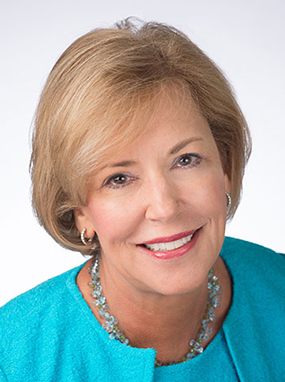With A Continuous Improvement Mindset, We Can Achieve Equity And Excellence
By Stephanie Hirsh
April 2016
Literacy proficiency is foundational to every child’s success in school. Students take English language arts courses in every grade and apply their literacy skills in every course. Lacking literacy skills, students fall behind in all subjects.
Every teacher is a literacy teacher, and every teacher is a learner. The educator’s learning cycle is similar to the literacy curriculum in most schools. Each semester, students’ engagement with literacy concepts gets more challenging and rewarding, just as each time teachers tackle a new learning goal, they build on previous learning and their work becomes more challenging and rewarding.
Learning Forward’s theory of action is based on assumptions that educators won’t achieve their high goals for student learning if they don’t set and measure high goals for educator learning.
I believe setting and achieving meaningful educator goals begins with a compelling vision for student learning. One example of a compelling student learning vision may be stated as: All students will read and problem solve on grade level. With that vision established, it is important to assess the current state of student literacy using multiple sources of data.
With that in hand, we have the information we need to set goals for student learning as well as our own. We answer the question: What do students need to know and be able to do, and, given that, what do we as their teachers need to know and be able to do to ensure our students are successful? Only when we connect those dots can we be successful in achieving the vision and goals we set for students.
With the right goals in mind, the hard work begins. We determine the precise content expertise we need to develop and the strategies for translating that knowledge into powerful instruction in the classroom. Not only do we determine the source of that expertise, we also decide how we will learn.
We plan for translating our new learning into classroom instruction and assessments. We practice with colleagues, and finally we are ready to begin applying our new learning with our students. At that stage, we’ll gather information on the impact of our learning and adjust where our formative assessments tell us is necessary.
If the school and learning teams applying such a cycle are successful in changing practice, student literacy will begin to improve, and teachers’ motivation and commitment to repeating this cycle of learning and implementation will increase.
This approach to improving literacy among students is far different than the “Houston, we have a problem” solution of sending everyone to a rocket workshop. Without making the shift to continuous improvement, we put students at great risk.
If I were to conduct a survey of school improvement plans, I would expect to find that the most common goal among them is to improve student literacy. And while I expect they will all have identified strategies for improving student literacy, I doubt few will have detailed the kind of adult learning that is essential to support the day-to-day improvements that will be required if they are to be successful in achieving their goals.
It is my hope that more and more schools adopt the continuous improvement mindset and achieve the results that we all know are possible for every student. Only then will our shared goals of equity and excellence be realized.

Stephanie Hirsh retired in June 2019 after 31 years with Learning Forward, an international association of more than 13,000 educators committed to increasing student achievement through effective professional learning. Hirsh led the organization as its executive director for the last 13 years where she presented, published, and consulted on Learning Forward’s behalf across North America.
Recent Issues
TAKING THE NEXT STEP
December 2023
Professional learning can open up new roles and challenges and help...
REACHING ALL LEARNERS
October 2023
Both special education and general education teachers need support to help...
THE TIME DILEMMA
August 2023
Prioritizing professional learning time is an investment in educators and...
ACCELERATING LEARNING
June 2023
Acceleration aims to ensure all students overcome learning gaps to do...








